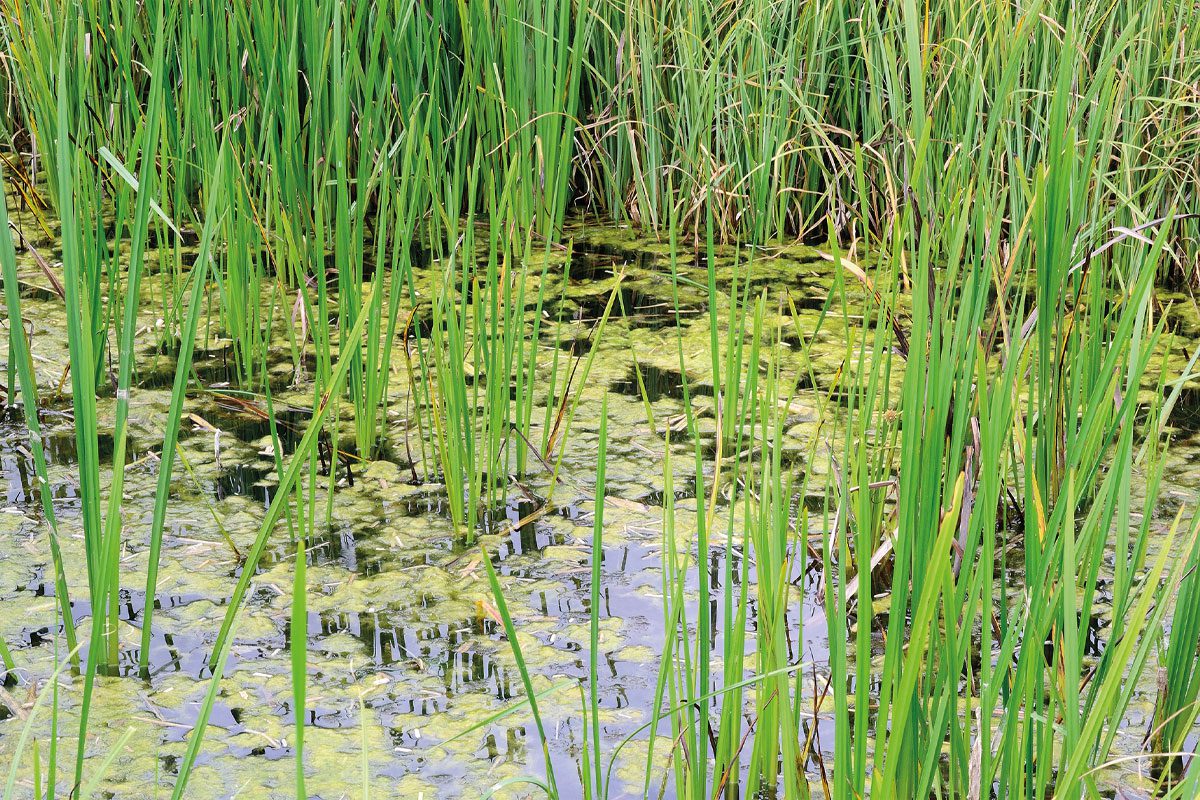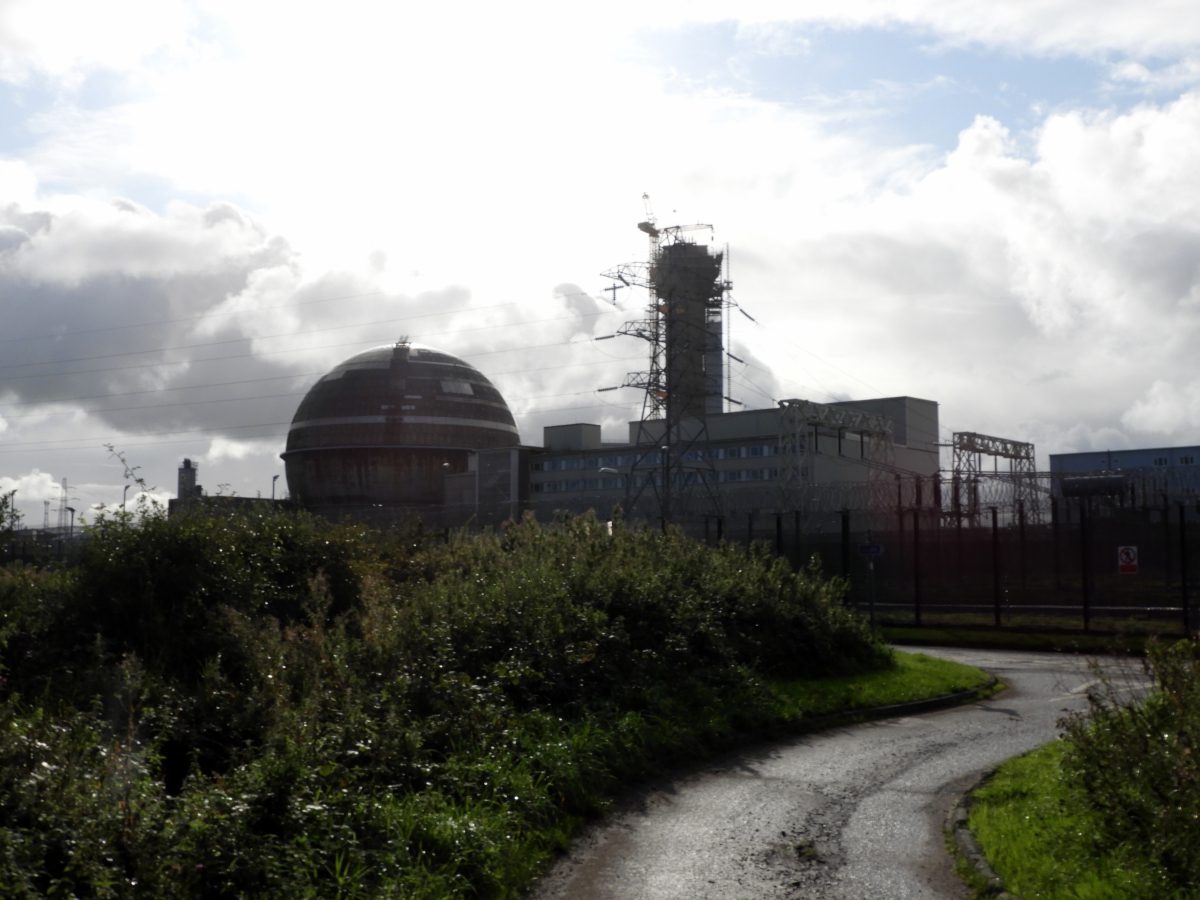This story is co-published with Arizona Luminaria, a nonprofit newsroom dedicated to community-centered reporting.
When Peter Else left the University of Arizona in 2005 to live in the San Pedro Valley full time, he planned to spend his retirement farming in one of the most ecologically intact landscapes left in southern Arizona, where the nearby river remains undammed and giant cactuses fill the space between the Galiuro and Rincon mountains.
But Else, who previously directed the Tucson Area Agricultural Centers at the University of Arizona, soon found himself in the middle of one of the most consequential debates over developing green spaces for green energy. For nearly a decade, he has been fighting the SunZia project—a transmission line connecting 3,000 megawatts of clean energy generated by wind farms in New Mexico to the power grid. The transmission line was routed largely along highways in New Mexico and Arizona but detoured into the San Pedro Valley for roughly 50 miles, cutting through a landscape that for decades avoided most of the impacts of human development. Other routes identified by developers were deemed to have greater negative impacts by federal regulators, while the company said building along existing infrastructure was too costly.
“I’ve never done anything like that before in my life,” Else said of becoming a citizen intervenor during the Arizona Corporation Commission’s (ACC) permitting process for SunZia, a role that allows citizens impacted by a project to directly participate in its permitting by providing sworn testimony and cross-examining witnesses. “I had no idea what I was getting into.”
We’re hiring!
Please take a look at the new openings in our newsroom.
See jobs
Fifteen years since the project was first proposed and nearly a decade after state regulators began reviewing the project, Else is still involved, suing the ACC, which regulates state utilities, over its issuing of a certificate of environmental compatibility (CEC) to SunZia. The suit argues that the development has fundamentally changed since it was narrowly approved in 2016 and no longer benefits Arizona.
When SunZia was approved, the project planned to build two side-by-side power lines and connect to a planned substation in Bowie, Arizona. One of the lines built would be an alternating current line, enabling other energy projects in southern Arizona to connect to the grid, while the other would be a direct current line, which doesn’t easily allow for interconnection and is best used for sending large amounts of energy over long distances. But since Pattern Energy purchased the project in 2022, only the DC line is being built after the ACC agreed to separate the permits for both of the lines. The AC line currently lacks the funding to begin construction, and all of the project’s wind energy is slated to be sold in California, where it’s worth more.
“As a matter of law, the Commission cannot approve a CEC when on one side of the balance is zero (no Arizona purchasers) or noneconomical power, and on the other side is environmental and ecological harm,” the lawsuit reads. “This is an independent reason to remand: the Commission must require Pattern to put on evidence of actual need in Arizona.”
Else’s lawsuit is just the latest in a series of challenges facing SunZia, the biggest renewable energy project in U.S. history, despite construction on the project having already begun. Fights over the development are playing out in state and federal courts.
Transmission lines are vital to the energy grid and a major component of the transition away from fossil fuels. The lines send energy, often generated in remote places, over long distances, typically to major urban centers. But building them can be a long and tedious process, involving regulators from various states and federal agencies and the consultation and feedback of local and tribal communities, environmental groups and others.

SunZia has been mired in controversy and delays, giving industry leaders and government officials examples of how the permitting process is holding back renewable energy projects and the need for reforms. To locals in the San Pedro Valley, tribes and environmentalists, it’s an example of how community stakeholders can be left behind as developments move forward, how environmentally and historically intact landscapes are at risk of being degraded in the nation’s energy transition and how the nation’s cultural heritage laws are not suited to address large-scale developments or climate change.
The Tohono O’odham Nation and the San Carlos Apache Tribe, along with the Center for Biological Diversity and Archaeology Southwest, a nonprofit focused on exploring and protecting heritage in the region, sued the Bureau of Land Management earlier this year over its approval of the project and requested construction be paused, alleging the federal agency failed to properly review how the project would impact cultural heritage resources in the area as required by the National Historic Preservation Act.
A federal judge ruled that, despite the San Pedro Valley being “one of the most culturally intact landscapes in Southern Arizona,” containing 12,000 years of human history, plaintiffs were too late with their objection. “In 2024, this court cannot revisit BLM’s 2015 decision or the sufficiency of BLM’s actions underlying that decision because challenges to an agency’s final action must be brought within six years,” U.S. District Court Judge Jennifer G. Zipps wrote in her decision.
The tribes have appealed the decision to the 9th Circuit Court of Appeals, seeking a ruling as soon as possible given construction of SunZia is ongoing in the San Pedro Valley. “We will continue to oppose this environmentally and culturally irresponsible project that could easily be rerouted through already degraded power line corridors rather than destroying this irreplaceable stretch of the San Pedro River Valley,” said San Carlos Apache Chairman Terry Rambler.
Their case, they argue, is not against the BLM’s 2015 decision, which centered on the National Environmental Policy Act, but alleges the BLM never properly conducted the cultural heritage studies needed to comply with the National Historic Preservation Act. They claim the BLM promised to do those studies but never did, and that they could not sue the federal agency until construction began without the required studies.
Else, the tribes, Archaeology Southwest and the Center for Biological Diversity have also filed a complaint with the Arizona Corporation Commission over its approval of the project, arguing Pattern Energy, the developer, “unlawfully begun construction of its transmission lines” without submitting a cultural landscape study and a historic properties treatment plan, which were required under the ACC’s approval of the project.
This story is funded by readers like you.
Our nonprofit newsroom provides award-winning climate coverage free of charge and advertising. We rely on donations from readers like you to keep going. Please donate now to support our work.
Donate Now
In both ACC cases, the commission itself argues the project has not fundamentally changed, as the second transmission line could still be built, and the complaint is untimely, which Pattern Energy’s attorneys have agreed with. However, Pattern Energy has gone a step further, arguing the ACC does not have jurisdiction over the project, saying in the state court case that Arizona statutes only give the commission “the authority to review and approve the siting location of certain type of facilities” but “lacks the authority to regulate interstate projects.”
Staff for the ACC has raised issues with that claim, arguing the commission indeed has jurisdiction over the project. In its state court filings, its attorneys have argued the court must “determine the degree of authority and discretion granted to the agency by the legislature” before it can “determine whether the agency acted outside of its authority.”
How that will affect the cases remains to be seen. Oral arguments for the state case will be held in Tucson on May 8.
“All of this hinges on the Arizona Corporation Commission’s primary mandate, which is to balance electricity benefits with the ecological impacts in Arizona,” Else said.


















